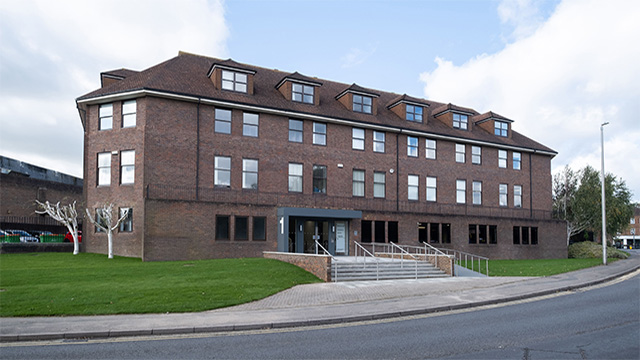The five things really driving PRS
Quintain, Delancey, Lendlease and now British Land are all grabbing the headlines for their major private rented sector plays.
It is a sector that previously struggled to gain mainstream acceptance. But the last 12 months has seen a series of more subtle accelerators that explain why PRS is grabbing more of the limelight – and an increasing proportion of investors’ equity.
Here are EG’s five reasons why everyone suddenly cares about renting.
Quintain, Delancey, Lendlease and now British Land are all grabbing the headlines for their major private rented sector plays.
It is a sector that previously struggled to gain mainstream acceptance. But the last 12 months has seen a series of more subtle accelerators that explain why PRS is grabbing more of the limelight – and an increasing proportion of investors’ equity.
Here are EG’s five reasons why everyone suddenly cares about renting.
1. Slowing commercial returns
Part of what is driving investment – especially that of the big REITs or fund managers – is slowing returns in the commercial market, which has been hit by instability and uncertainty around the UK’s exit from the European Union and wider market conditions.
Retail is in trouble, offices are expensive (and starting to see falling rents). Industrial and student assets go from strength to strength, but there are justifiable fears of a bubble. Yields get lower and lower.
Residential yields are low but relatively stable. They are viewed as both long term and relatively acyclical. Much of the capital looking at the sector does not want a quick exit: it wants to be invested for the long term and not worry about it.
The PRS pushes towards that.
Arthur McCalmont, senior director in the CBRE Residential Capital Markets team, said investment volumes have risen 33%year on year, and this is likely to continue.
“The UK BTR market has never been in such a good place, and the transactional statistics prove this without question. We remain in a phase of rapid expansion, which is continuing through 2018, with over £1bn of deals already closed,” he said.
2. Housebuilders and the slowing sales market
Achieving scale has previously been a problem, but now housebuilders and developers are converting stock for rent as the new-build sales market has slowed – especially in London.
This means, firstly, that housebuilders have been less competitive when buying inner city sites, allowing rental schemes to contend – especially now new affordable policy gives them an edge.
Secondly, developers that have bought sites are either dedicating blocks for rent, or trying to reposition all of them for rental forward funding as the new-build market slows.
Three years ago, a rental buyer would pay 15-20% less in forward funding a development than would be received through open market sale. That gap has declined as the sales market has cooled, while the advantages of de-risking schemes in advance are more and more obvious.
Ballymore recently announced that it would devote “many” units in its 8,000 home London landbank to the rental market.
Other major housebuilders including Bellway, Crest Nicholson, Taylor Wimpey and Barratt have attempted to sell rental blocks.
Outside London, single family developments from Countryside and Keepmoat are being sold on.
JLL stats show many more of the units now under construction in London are being pushed towards the build-to-rent market. Of the 42,629 units under construction, 5,683 units – or 15% – are for rental, up from just 6% in 2014.
3. Early movers, failures and changing business models
Some early movers selling out, bringing in new cash or just failing has allowed new large-scale buy in.
Delancey bought the Olympic Village in 2011 with Qatari Diar, while Fizzy Living and Thames Valley Housing started to assemble a 1,000-home portfolio in 2012.
Six years later they are looking to realise some of their gains and bring in new capital. Oxford Properties is buying into Delancey’s £1.5bn Get Living, while British Land is in talks with TVH to buy Fizzy Living.
In Wembley, Lone Star have only held Quintain for two and half years but surprised many with a £2.5bn sale of the company and its 5,000 rental homes. It said the time is right for an exit.
[caption id="attachment_880794" align="aligncenter" width="847"] Quintain’s Wembley PRS scheme[/caption]
Other regional deals are equally as exciting: Invesco bought into Platform last year, while Greystar is eyeing Inhabit’s £1bn eight site regional portfolio.
Meanwhile, Hermes will not be continuing its tie-up with Countrywide through the Vista fund and the original seed portfolio is being sold, while fund manager Philip Nell has moved to LaSalle Investment Management.
Essential Living has replaced its senior management team and is in the process of selling a scheme at Canary Wharf, and has already sold half of the Perfume Factory in Acton to Imperial College.
Other players have or are in the process of raising new money – including Long Harbour, LaSalle IM and M&G – to continue their development.
4. Policy and high rents
Policy changes have been supportive, further increasing viability.
Both the Draft London Plan and revisions to the National Planning Policy Framework recognise the sector and have made concessions in affordable housing provision compared to housing built for sale.
Successive ministers have shown their support, and despite incumbent Dominic Raab being pro-home ownership, the rhetoric coming from government remains sympathetic.
However, despite planning acceptance there has been recent pushback regarding the rents charged, which have not supported affordability concessions.
An EG analysis in 2017 of 117 PRS schemes across the UK with 10,000 homes between them found half of the schemes with one-bed flats had rents of more than 40% the local median salary before tax.
On average, blocks were 6.9% more expensive than in the surrounding area, and many schemes in London were far higher.
James Murray, deputy mayor for London, said before a London assembly committee that revisions had been made to the London Plan to ensure build-to-rent homes were more affordable.
5. The future: management, single family and placemaking
American, European, Asian and Middle Eastern investment is all on the cards, as more opportunities for scaleability emerge and the flat property market continues to drive UK investment.
As more and more blocks come online there will be a further focus on management, operation and brand, as many buyers look to ensure razor-thin yields are not lost on operational inefficiencies.
Cortland, for example, has recently announced it will be using its own supply chain from China to cut down on costs.
[caption id="attachment_928561" align="aligncenter" width="847"] Cortland has set up its own supply chain, Cask Industries[/caption]
When gross to net can take up as much as 30% of operating income from a yield already below 4%, management systems suddenly become very important.
Single family housing is also becoming more interesting to investors.
The huge success of Sigma’s £250m PRS REIT listing, and further £250m raise, show the amount of capital looking at the sector. Fund management giant BlackRock has said it is looking at routes to entry.
For housebuilders it means a chunk of sites can be built out with forward funding. For operators there is no issue around breaking up blocks and selling on afterwards if rents are not achieved.
Finally, for some of the UK’s largest schemes, build to rent could either be a major component to accelerate placemaking, or take on the majority of the scheme.
There has already been speculation a rental operator could make a play for Capco’s Earls Court.
To send feedback, e-mail alex.peace@egi.co.uk or tweet @egalexpeace or @estatesgazette











